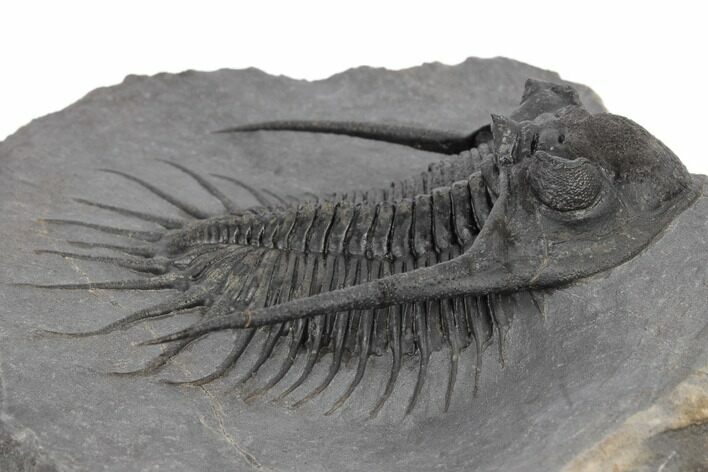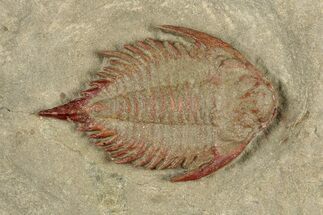This Specimen has been sold.
3.3" Excellent Kayserops Trilobite - Bou Lachrhal, Morocco
This is a scarce Kayserops megaspina trilobite collected at Bou Lachrhal, Morocco. In the past this trilobite has often been referred to as “Comura cometa", but it actually bears few similarities with the genus Comura.
This specimen is very large for the species at 3.3 and is one of the nicest examples I've seen. Just checkout the shell detail and eye facets on this beautifully prepared specimen. Both genal spines have been prepared free of the surrounding rock.
This specimen is very large for the species at 3.3 and is one of the nicest examples I've seen. Just checkout the shell detail and eye facets on this beautifully prepared specimen. Both genal spines have been prepared free of the surrounding rock.
About Trilobites
Trilobites are an extinct class of marine arthropods that thrived for nearly 270 million years, from the early Cambrian to the end of the Permian period (around 521 to 252 million years ago). They are one of the most successful and diverse groups in the history of life, with over 25,000 described species spanning a wide range of sizes, shapes, and ecological niches. Known for their distinctive, segmented exoskeletons, trilobites provide invaluable insights into the evolutionary history of arthropods and the dynamics of ancient marine ecosystems.
Trilobites are an extinct class of marine arthropods that thrived for nearly 270 million years, from the early Cambrian to the end of the Permian period (around 521 to 252 million years ago). They are one of the most successful and diverse groups in the history of life, with over 25,000 described species spanning a wide range of sizes, shapes, and ecological niches. Known for their distinctive, segmented exoskeletons, trilobites provide invaluable insights into the evolutionary history of arthropods and the dynamics of ancient marine ecosystems.
SPECIES
Kayserops megaspina
AGE
LOCATION
Bou Lachrhal, Morocco
SIZE
3.3" long
CATEGORY
SUB CATEGORY
ITEM
#189967
We guarantee the authenticity of all of our specimens.
 Reviews
Reviews
















